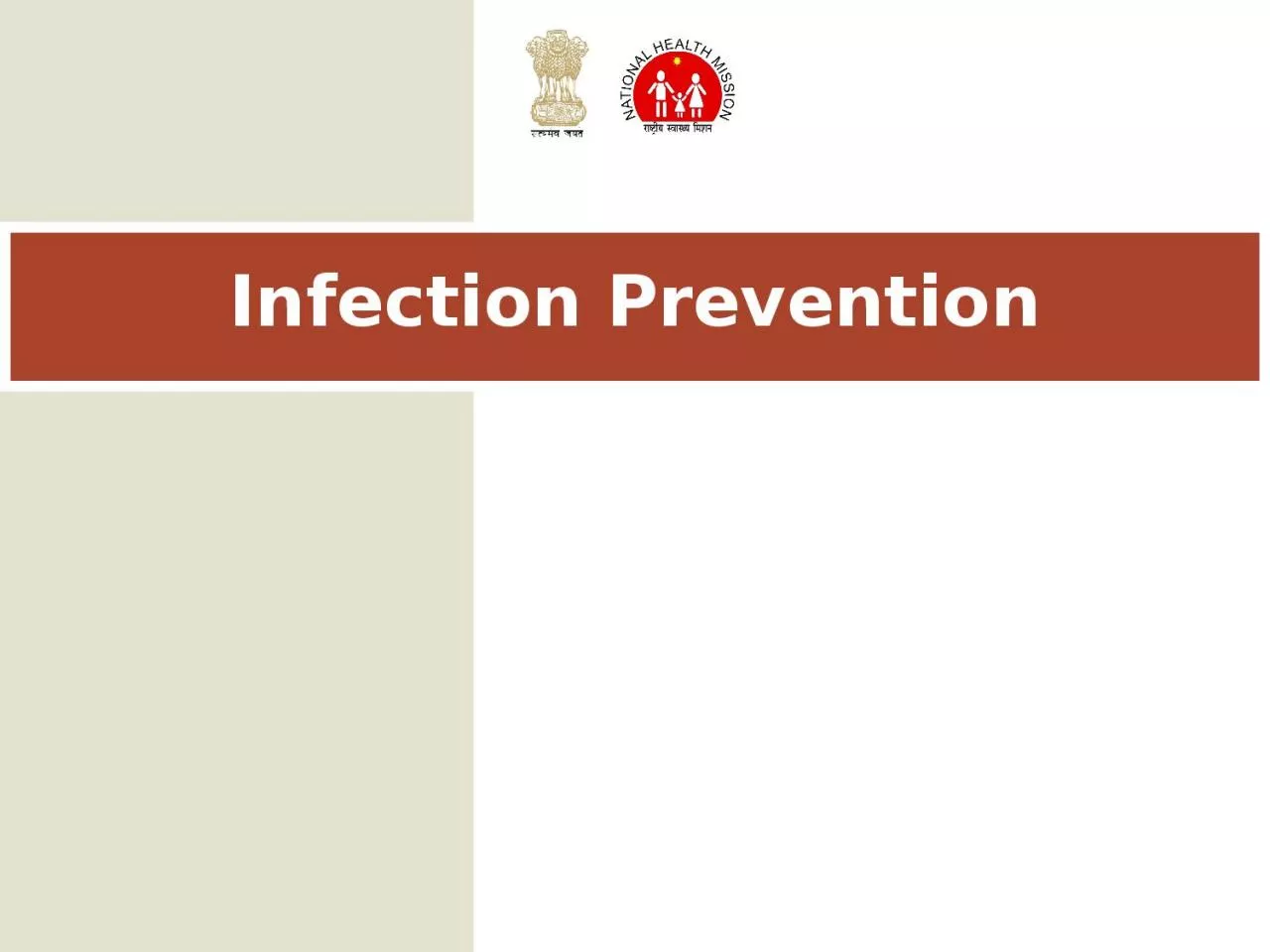

y t he end o f t h i s s e ss i on l ea r n e r s w il l be ab l e t o Describe Sources of infection Tell the importance of infection prevention ID: 1040855
Download Presentation The PPT/PDF document "Infection Prevention 2 B" is the property of its rightful owner. Permission is granted to download and print the materials on this web site for personal, non-commercial use only, and to display it on your personal computer provided you do not modify the materials and that you retain all copyright notices contained in the materials. By downloading content from our website, you accept the terms of this agreement.
1. Infection Prevention
2. 2By the end of this session, learners will be able to:Describe Sources of infectionTell the importance of infection preventionDescribe principles of infection preventionDescribe standard precautionsDemonstrate steps of hand washing and preparation of 0.5% chlorine solutionExplain proper handling of contaminated wasteDescribe proper disposal of biomedical wasteLearning Objectives
3. 3What are the common sources of infection?Environment : Blood, body fluids, secretions, excretions, placenta, contaminated sharps and other equipment Other clients and attendants Health care delivery personnelPeople in the community Sources of Infection
4. 4All objects in contact with the client: Potentially contaminatedEvery person: Potentially infectiousIf an object is disposable: Discard as wasteIf reusable: Prevent infection by decontamination cleaning, disinfecting or sterilizingPrinciples of Infection Prevention
5. 5Hand washingUse of protective attire (PPE)Processing of used itemsProper handling and disposal of sharpsMaintaining a clean environmentBiomedical waste disposal Standard Precautions
6. 6Steps of Hand Washing
7. 7GlovesMasksEye-coversGownsCapsFootwear2. Standard Precautions: Protective Attire
8. 8A. DecontaminationB. CleaningC. Sterilization or high level disinfection (HLD)D. Storage3. Standard Precautions: Processing of Used Items
9. 9
10. 10
11. 11Needles and syringesUse disposable needle and syringe ONLY ONCEAlways wear utility gloves while handling sharpsDo not disassemble the needle and syringe after useDo not recap, bend or break needles before disposalMake needles unusable after single use by burning them in a needle destroyer and/or in hub-cutterNever burn syringes4. Standard Precautions: Proper Handling and Disposal of sharps
12. 12Dispose off needles, syringes with fixed needles, scalpels, blades etc. in a puncture-proof white (translucent) container Dispose broken glassware in cardboard boxes with blue coloured marking4. Standard Precautions: Proper Handling and Disposal of sharpsWaste sharps including metalsPEP (post-exposure prophylaxis)Wash the exposure site with soap and water immediatelyAvoid applying any chemical cleansersDo NOT attempt to milk or squeeze the woundPEP should be offered and initiated as early as possible, for all individuals with an exposure that has the potential for HIV transmission, ideally within 72 hours
13. 135. Standard Precautions: Maintaining Clean EnvironmentFor cleaning areas – operation theatres, procedure rooms , latrinesDisinfectant cleaning solutionTo clean up spills of blood or other body fluidsDisinfectant0.5 % chlorine solutionTo remove dirt & organic material such as grease, oil Plain detergent and waterUsesType of cleaning solution
14. 14It is the waste that is generated during diagnosis, treatment or immunization of human beings Purpose of waste disposalMinimize/Prevent the spread of infection to hospital personnel who handle wastePrevent the spread of infection to the local community6. Standard Precautions:Biomedical Waste Disposal
15. 15Steps of waste disposalA. SegregationB. Collection and StorageC. TransportationD. Treatment and disposal6. Standard Precautions:Biomedical Waste Disposal
16. 16Biomedical Waste Disposal: A. SegregationColour Coded BinsYellow: Human and Animal Anatomical Waste, Soiled Waste, Expired or Discarded Medicines, Chemical Waste, Chemical Liquid Waste, Microbiological and Lab Waste, Discarded Contaminated linen and mattresses etc. Red:Contaminated Recyclable Waste such as tubing, IV bottles, bags, syringes and glovesBlack:General waste such as kitchen waste, paper bags, waste paper, disposable glasses & plates, left over food etc.Puncture proof: White (translucent)- Waste sharps including metalsBlue- Glassware and metallic body implants
17. 17Biomedical Waste Disposal: B. Collection and StorageWrongCorrect
18. 18Biomedical Waste Disposal: C. TransportationWrongCorrect
19. 19Treatment and disposal options of bio-medical waste as per GoI guidelineThere should be no chemical pretreatment before incineration, except for microbiological, lab and highly infectious wasteDisposal by deep burial is permitted only in rural or remote areas where there is no access to common bio-medical waste treatment facility, with prior approval from the prescribed authorityDeep burial facility should be located as per the Central Pollution Control Board provisionsPlastic waste should never be sent to/put in landfillsBiomedical Waste Disposal:D. Treatment and Disposal
20. 20Consider all objects coming in contact with client and every person as potentially infectiousIf an object is disposable, discard as waste, if reusable-prevent infection by decontamination, cleaning, disinfecting or sterilizing and storing appropriatelyThe first step in processing of used instruments is decontamination i.e. immersing instruments in 0.5% chlorine solution for 10 minutes specifically to kill HIV and Hepatitis B and C viruses and protecting handling staff from infectionsIn BMWM, the first step is segregation of waste at the source of generation in different colour coded binsKey Messages